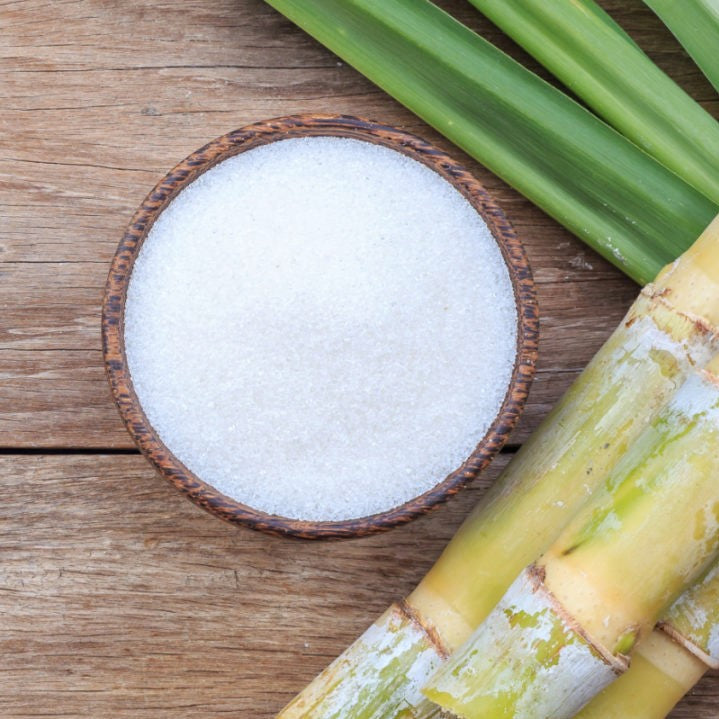The Scientific Research Behind Cane Sugar Processing: Just How Sweet Taste is Improved
The Scientific Research Behind Cane Sugar Processing: Just How Sweet Taste is Improved
Blog Article
An In-Depth Guide to the Ecological Effect and Sustainability Practices in Cane Sugar Processing
The ecological impact of walking stick sugar processing offers a complicated array of difficulties that warrant careful examination. From soil destruction and too much water use to the carbon footprint related to growing and production, the consequences of standard techniques are far-reaching. On the other hand, the adoption of cutting-edge sustainability procedures offers a pathway towards extra accountable production techniques. Understanding the interplay in between these concerns is important for stakeholders in the industry. What certain methods can be carried out to strike a balance between productivity and environmental stewardship? The responses hinge on a better consider both the obstacles and prospective options.
Introduction of Walking Cane Sugar Handling
Walking stick sugar processing involves a series of organized actions that transform sugarcane into refined sugar. Initially, gathered sugarcane is transferred to processing facilities, where it undertakes cleaning up to get rid of soil and debris. Following this, the walking stick is squashed to remove juice, which is then clarified by eliminating pollutants through home heating and the enhancement of lime.
The cleared up juice undertakes dissipation, where water is eliminated to concentrate the sugar content. This focused syrup is then crystallized through cooling, permitting sugar crystals to develop. These crystals are separated from the remaining syrup making use of centrifugation, leading to raw sugar. To attain refined sugar, the raw product goes through additional purification procedures, which may include cleaning and filtering system to get rid of staying impurities and shade.
The end product is then dried and packaged for distribution. Throughout this whole process, preserving efficiency and quality assurance is vital to guarantee the sugar meets sector criteria. Each action in walking cane sugar handling not just contributes to the final product yet also has implications for source use and waste generation, establishing the stage for conversations on sustainability and ecological impacts associated with sugar production.
Ecological Challenges of Manufacturing
The manufacturing of cane sugar presents several substantial ecological challenges that warrant attention. One key worry is the considerable use agrochemicals, consisting of pesticides and plant foods, which can lead to soil deterioration, biodiversity loss, and contamination of regional water resources. The overflow from sugarcane areas usually lugs these chemicals into neighboring ecosystems, interrupting marine life and influencing the wellness of areas reliant on these water bodies.
An additional difficulty is the high power intake related to sugarcane handling. The boiling and refining phases need substantial warm, mostly generated by shedding nonrenewable fuel sources, adding to greenhouse gas emissions. Furthermore, the large land location required for sugarcane growing can lead to logging and environment damage, further aggravating climate modification and harmful wildlife.
In addition, the labor techniques in some regions raise ethical worries, as workers may encounter bad working problems and poor wages. This scenario typically bolsters a cycle of hardship in neighborhood areas. Cane Sugar Processing. Attending to these environmental obstacles is critical for creating more sustainable techniques in walking cane sugar production, ultimately benefiting both the environment and the communities associated with this industry
Water and Land Use Influence
Water resources and land usage are crucial components in the walking cane sugar sector that substantially impact the environment. The growing of sugarcane needs significant water input, with price quotes suggesting that it can consume up to 2,000 litres of water per kilogram of sugar produced. This extensive use water usually leads to depletion of neighborhood water sources, influencing not just the sugarcane plantations yet also surrounding ecological communities and areas that depend on the exact same water sources for farming and domestic use.

Additionally, land usage for sugarcane farming can lead to logging and the conversion of all-natural habitats right into monoculture haciendas. This method diminishes biodiversity, interrupts regional ecosystems, and adds to soil that site destruction. The development of sugarcane fields typically elbows in on useful farming land, producing competitors for sources in between food and biofuel manufacturing.
Sustainable practices, such as enhancing watering strategies and applying crop turning, are necessary to reduce these effects. By taking on a lot more effective water usage and land administration approaches, the walking cane sugar market can decrease its environmental footprint, making sure an equilibrium in between agricultural performance and ecological preservation.
Greenhouse Gas Emissions
Greenhouse gas exhausts represent a significant environmental concern within the cane sugar processing industry, especially as farming techniques expand to meet global need. The growing of sugarcane, a crop that thrives in exotic climates, relies greatly on synthetic fertilizers and chemicals, which add to nitrous oxide exhausts. Additionally, land-use changes, including logging for new sugarcane vineyards, release co2 saved in greenery and soil.
During handling, energy usage is one more significant resource of greenhouse gas discharges - Cane Sugar Processing. Many sugar mills make use of fossil gas to power machinery and produce heat, resulting in substantial carbon footprints. Moreover, the transport of raw sugarcane and finished products adds layers of discharges through gas burning in cars
The advancing effect of these discharges worsens climate adjustment, posturing risks not only to the atmosphere but likewise to the long-term feasibility of the market. Stakeholders should acknowledge the urgent need for detailed approaches that attend to these exhausts. This includes evaluating present agricultural methods, refining techniques, and transportation systems to recognize areas for enhancement and mitigation. Addressing greenhouse gas discharges is important for cultivating a much more lasting cane sugar market in an altering environment.

Lasting Practices and Innovations
Lasting practices and technologies are increasingly crucial in the walking cane sugar processing sector as stakeholders look for to minimize ecological impacts while keeping productivity. One considerable innovation is the execution of integrated crop administration, which maximizes source usage by incorporating soil administration, bug control, and plant turning strategies. This approach enhances yield while decreasing chemical inputs and preserving soil health.
Additionally, the adoption of renewable resource sources, such as Your Domain Name biomass from sugarcane residues, has gotten grip - Cane Sugar Processing. By transforming waste products right into power, processing facilities can minimize their dependence on fossil fuels, thus decreasing greenhouse gas emissions
Water management methods have actually additionally seen improvements with the recycling and reusing of water in handling plants, considerably lowering freshwater intake. Innovations in innovation, such as accuracy farming, make it possible for farmers to monitor crop health and resource usage better, ensuring sustainable growing methods.
Moreover, qualification programs like Fair Profession and Rain forest Partnership urge eco liable farming techniques and advertise social equity within the supply chain. By welcoming these lasting techniques and technologies, the walking cane sugar handling market can boost its strength and add favorably to ecological stewardship.
Final Thought
The environmental impact of cane sugar handling offers substantial difficulties, including soil degradation, high water consumption, and greenhouse gas exhausts, along with ethical concerns connected to labor techniques. Addressing these issues with sustainable techniques, such as integrated crop administration, sustainable energy fostering, and water recycling, is vital. By advertising socially equitable and eco accountable methods in sugar production, the sector can minimize its negative results, making sure a much more lasting future for both areas and ecological communities associated with this industry.
Cane sugar processing includes a series of methodical actions that change sugarcane into polished sugar. Each step in cane sugar processing not just adds to the last product however also has ramifications for resource use and waste generation, establishing the stage for discussions on sustainability and ecological impacts connected with sugar manufacturing.
Greenhouse more gas discharges represent a significant environmental worry within the walking stick sugar handling industry, specifically as agricultural methods broaden to meet worldwide need.Sustainable practices and innovations are increasingly important in the cane sugar processing sector as stakeholders look for to reduce ecological influences while keeping performance.The ecological influence of walking cane sugar handling provides considerable difficulties, consisting of dirt degradation, high water intake, and greenhouse gas discharges, along with honest issues associated to labor practices.
Report this page